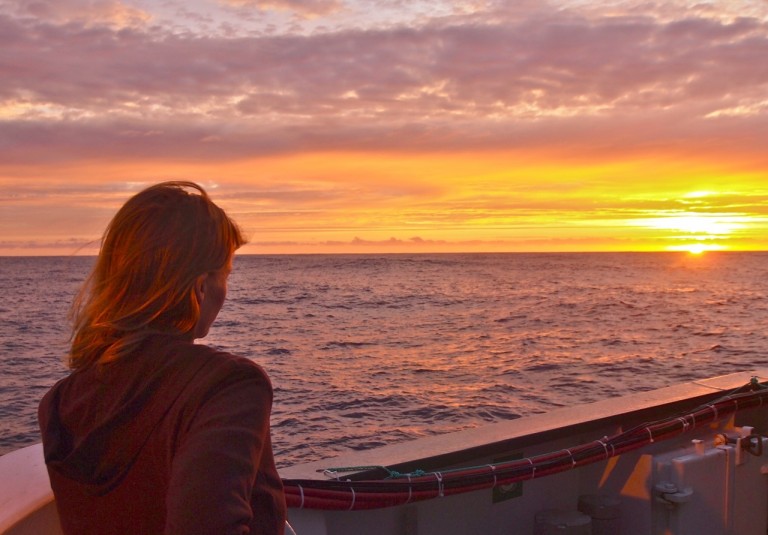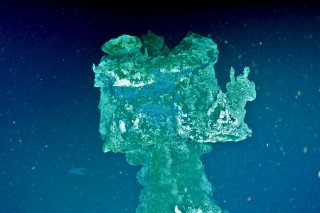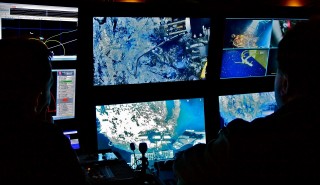Today was going to be the day. I could feel it in my bones and my stomach.

In the past 12 hours, I had not been thrown out of my bed while trying to sleep, and I hadn’t needed a death grip on the safety bar to take a shower. Come Wednesday evening, the forecast was for decreasing winds, and a swell that would finally get below 9 feet so we could dive again. For perspective, during the height of the storm, we had waves that sometimes crashed over the bridge of the ship, meaning they were over 30 feet tall. It takes the sea a long time to calm down after such a tumultuous event.

I woke up every 2 hours to check on weather conditions, and at 6 a.m., I stood on the back deck with Josh, the night shift ROPOS operator. “Still big,” he said. “But coming down,” I replied. He smiled. I’ve been pegged as the only optimist left on this ship, which is a label I wear with pride. We’ve had some dark times out here, but I just knew we had at least one more dive left in us. The sunrise was beautiful over the fantail, and I hoped this was a sign of good things to come.
Dive On, Sort Of
By 8:30 a.m., my team was ready to go, ROPOS had gone through pre-dive checks, and Josh was ready for ROPOS to take the plunge. But within minutes of hitting the water, ROPOS lost telemetry, meaning we lost the brain of ROPOS. Some of our screens went blank, a number of alarms went off, and we had to recover the vehicle.
Keith, the ROPOS chief, had warned me about this possibility, that after sitting on the back deck for 5 days getting sloshed, bumped, vibrated, and generally treated unpleasantly, ROPOS might still suffer from some electronic seasickness. Indeed, it appeared he was right. The next 8 hours were tense, with the ROPOS crew working constantly to try to determine the source of the problem. Was it this canister? Was it this wire? I left them to their business and retreated in solitude to my room, trying to keep on my optimistic face.
At 4 p.m., we got word that the ROPOS team had solved the problem. We sped through pre-dives and were in the water an hour later. Once again, we were in a race against time, but this time the clock was ticking down to our departure back to land. We had to leave Axial at midnight if we wanted to be back in Victoria on schedule.
Dive On, For Real

We made a quick descent to the seafloor, about 600 meters east of Axial, and spent an hour and a half hovering above the seafloor, filling the virus sampler with seawater. This isn’t a glamorous sample, but it is critical for the microbiologists and virologists to understand what organisms are in the water that bathes and circulates through Axial Seamount, and how they are related to the organisms we detect in the vent fluids. We filtered over 300 liters, then made our trek west to the International District, an area of known high temperature venting at Axial Seamount.
We found our way to a large sulfide structure called Escargot, which is named after its shape. Escargot is a beautiful structure, covered in white filamentous microbial mats, purple ciliates, and all sorts of little worms and limpets. We used Giora’s Isobaric Gastight Samplers to capture low temperature fluid (~40°C) where microbes like to live, then high temperature fluid (~270°C) where microbes don’t like to live. By comparing the chemistry of the two, we can figure out what energy sources the microbes are using.
And that was that. We lifted off the bottom just shy of 10 p.m. ready for the return to the ship. The lab is busy tonight as we’re filtering water and measuring gas concentrations. But after so many days sidelined by weather, the optimist in me knows the science party is sleepy, but happy.

